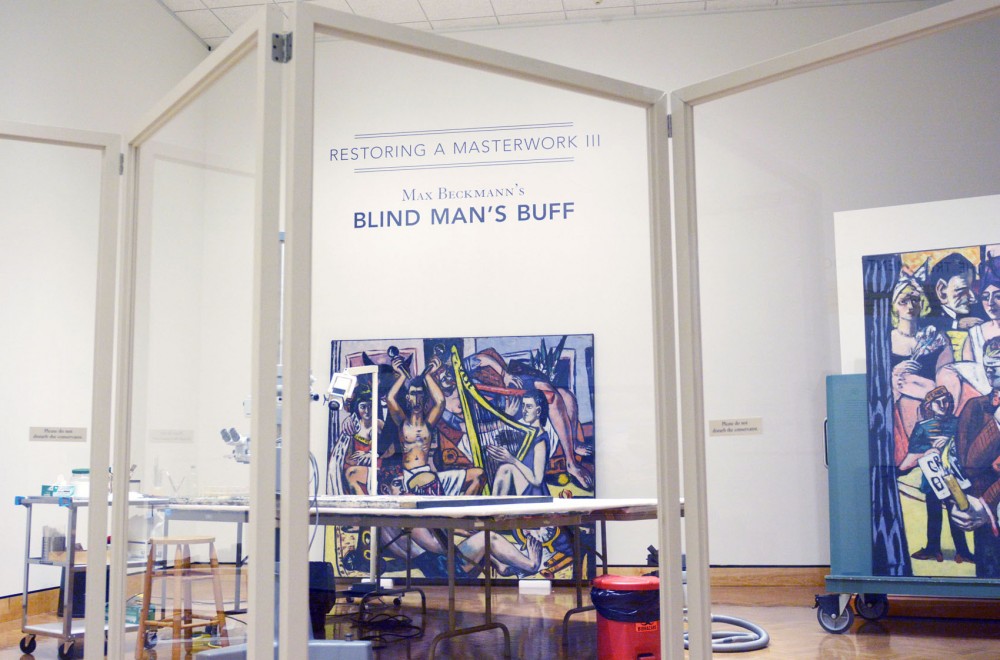The art restoration process has long been hidden from prying eyes in the backs of museums, and rarely does one consider the work that goes into maintaining collections of centuries-old works.
The Minneapolis Institute of Arts, in conjunction with the Midwest Art Conservation Center, is opening that world up to the public.
The exhibit, the third of its kind at the MIA, centers on the restoration of a single work: Max Beckmann’s “Blind Man’s Buff,” a massive, vibrant triptych painted between 1944 and 1945.
Erika Holmquist-Wall, the curator of the exhibit, said she hopes that restoring a relatively recent work proves restoration isn’t just for classical paintings. Additionally, the exhibition illustrates that however scientific the restoration process has become, it still retains plenty of humanity.
The use of technology has transformed the art restoration world rapidly throughout the past few decades.
Curators like Holmquist-Wall often use X-rays and infrared light to identify previous — often failed — attempts at restoration. These antiquated attempts, which Holmquist-Wall described as “horrifying,” involved techniques that permanently altered the works.
That generation of restoration has tainted the field of art preservation in some artists’ minds. In the 1950s, curators used “wax lining” — essentially ironing hot wax onto the back of a painting — in an effort to preserve works. This technique would flatten the brushstrokes, destroying a painting’s unique character.
Modern restoration has shied away from these irreversible methods in favor of less “heavy-handed” ones, Holmquist-Wall said. For instance, she described “inpainting,” which involves tinting only microscopic areas of a degraded painting. Compared to previous methods that retinted paintings completely, inpainting precisely restores the faded color of a work.
With the exhibition, Holmquist-Wall hopes to demystify her job. Though she believes the public has become savvier about the art world, she still sees cases of misunderstandings.
Holmquist-Wall described an instance when a man brought the Midwest Art Conservation Center a painting he wanted to restore. Beforehand, “he took a garden hose to it, hoping to wash off the grime,” she said. She hopes the exhibit will help illuminate how art restoration goes deeper than just cleaning.
The exhibit, though, demonstrates more than just the restoration process. It allows patrons to engage with a painting in this entirely new context.
“Restoring as major a work as the Beckmann gives the public a taste of just how interesting this work is,” Holmquist-Wall said. “It’s got a fascinating story, and I’m thrilled to share it.”
Seeing a curator meticulously restore a work reminds onlookers of exactly how physical a painting is. The exhibit demonstrates firsthand how important every brushstroke, pigment and layer is to a work of art.
Prior to restoring, art conservators have to research everything about a painter to ensure they remain faithful to his or her original vision.
Through this research, a conservator gains an intimate knowledge of every stroke in a painting. The restoration process is certainly scientific, yet it still requires a human element. There’s no single formula for touching up an old work.
What: Restoring a Masterwork III: Max Beckmann’s “Blind Man’s Buff”
When: Through March 1, 2014
Where: Minneapolis Institute of Arts, 2400 S. Third Ave., Minneapolis
Cost: Free














